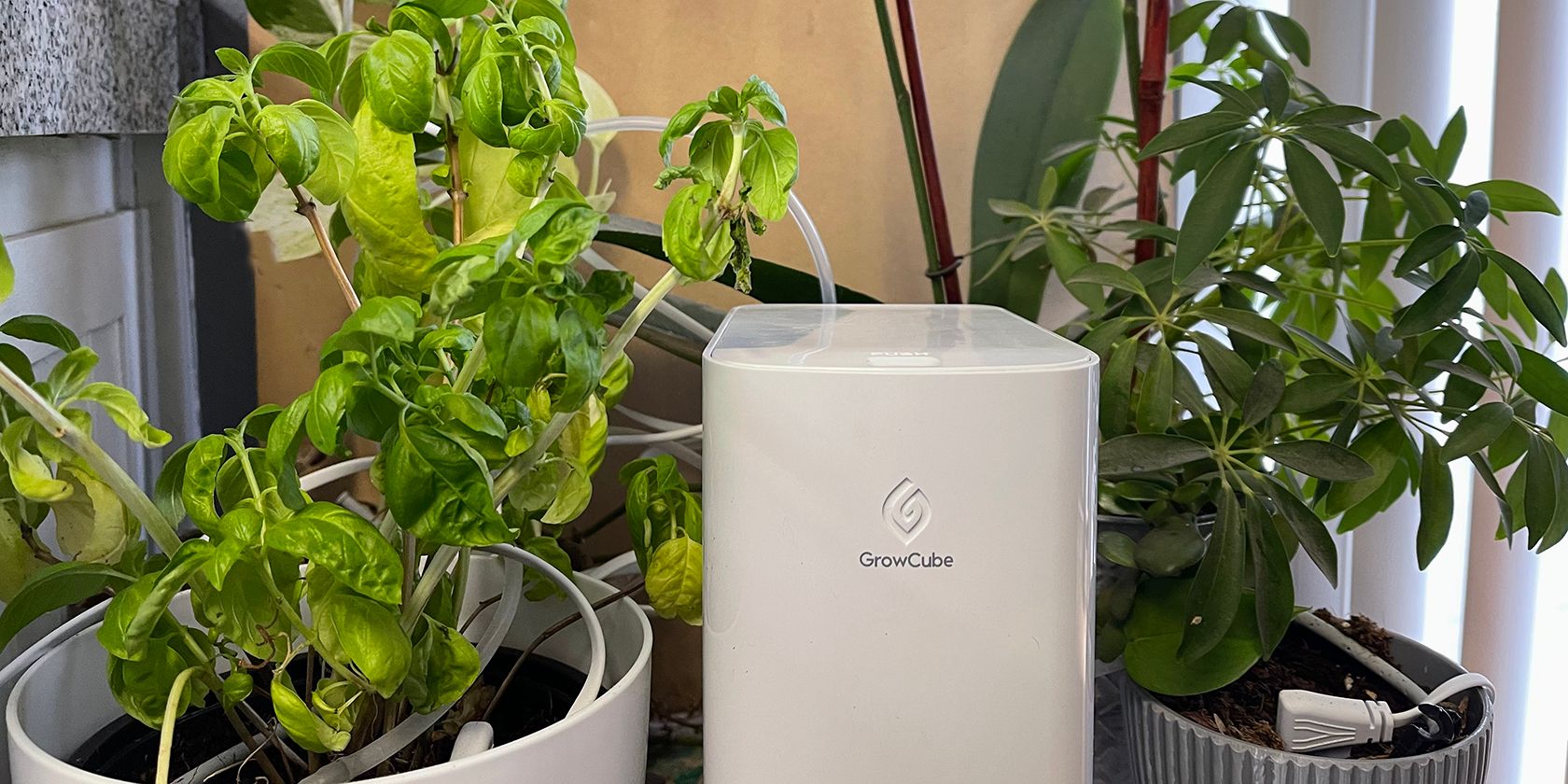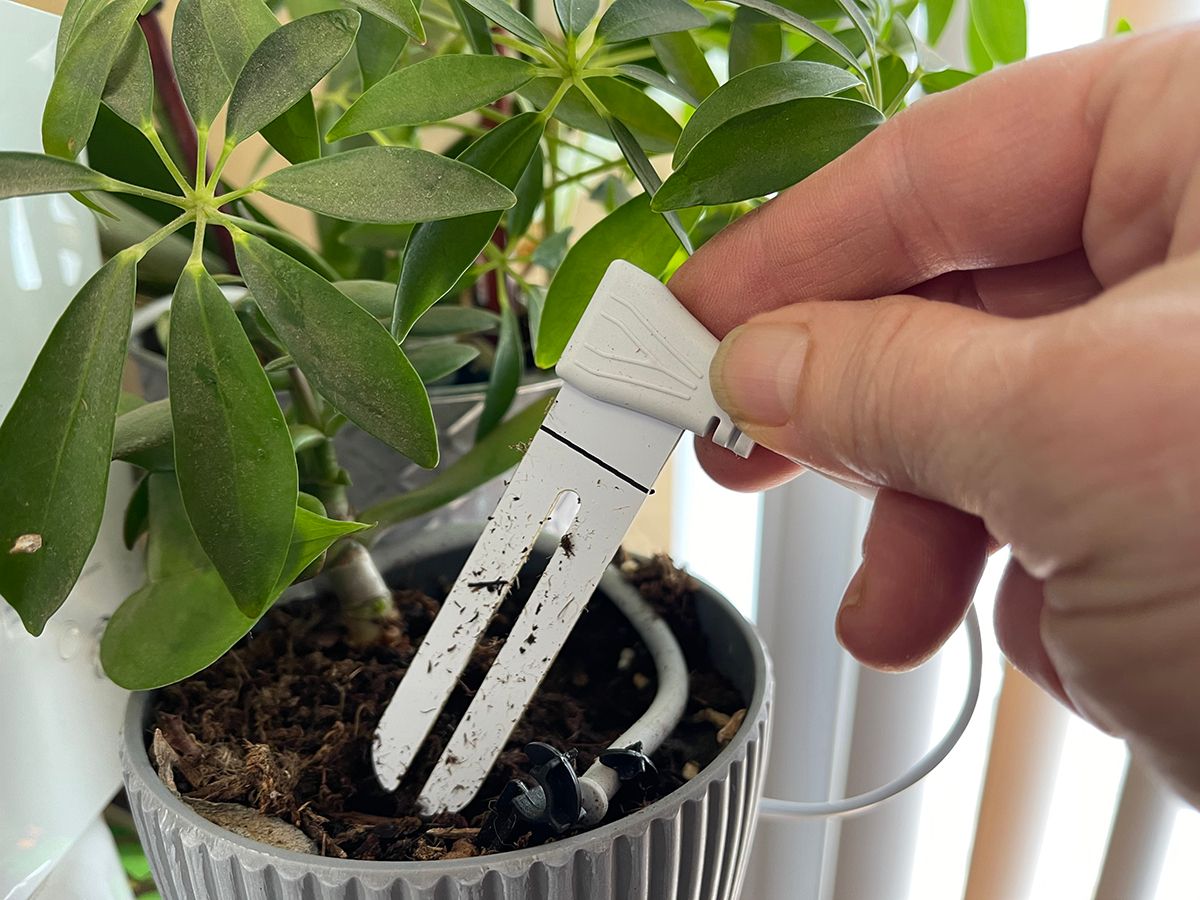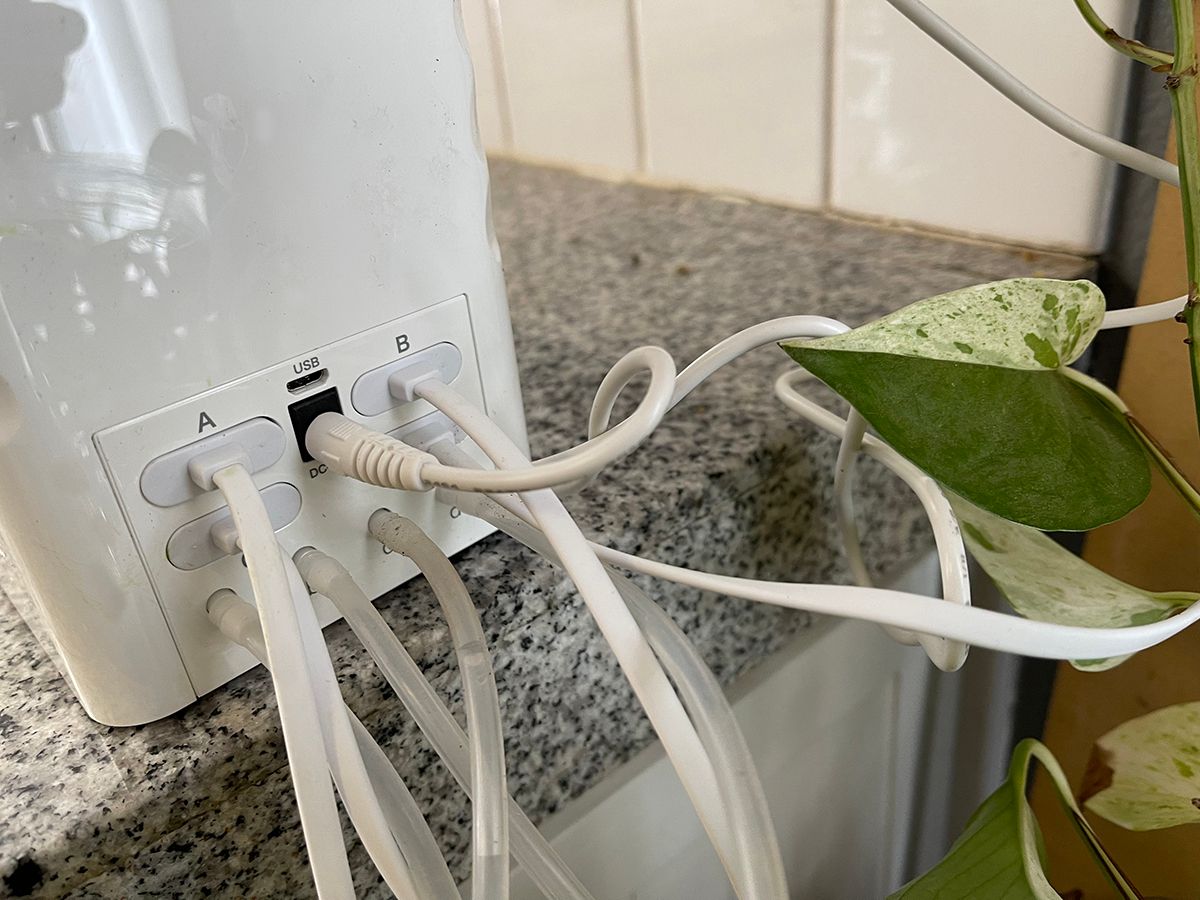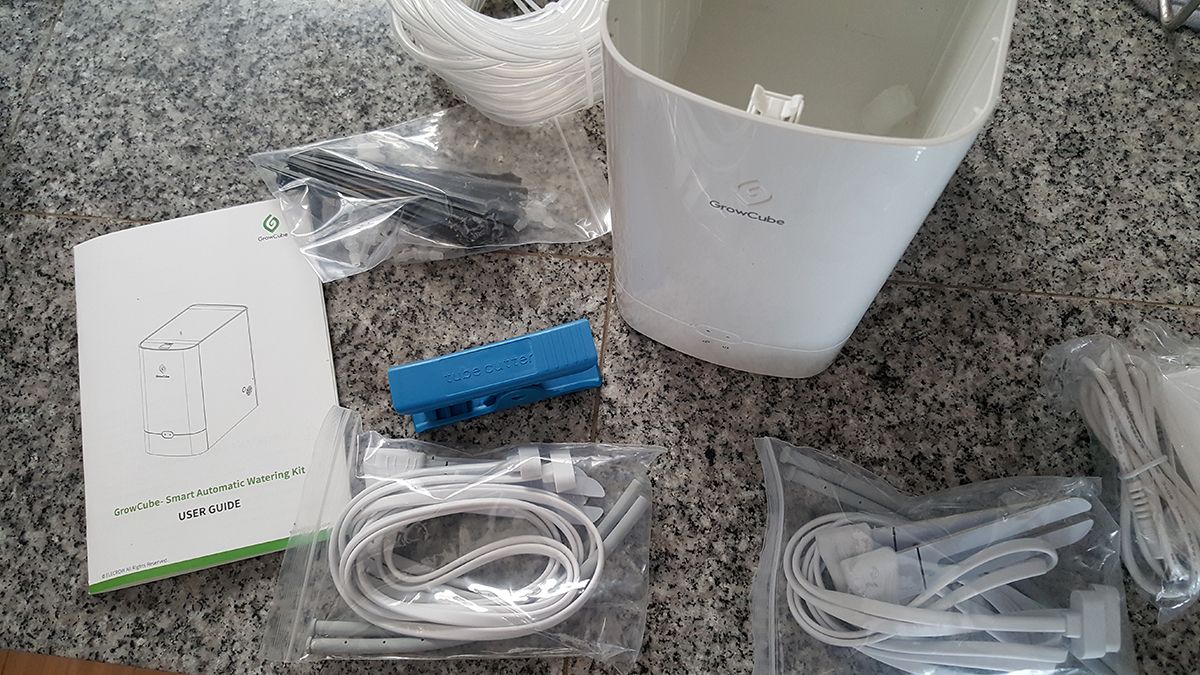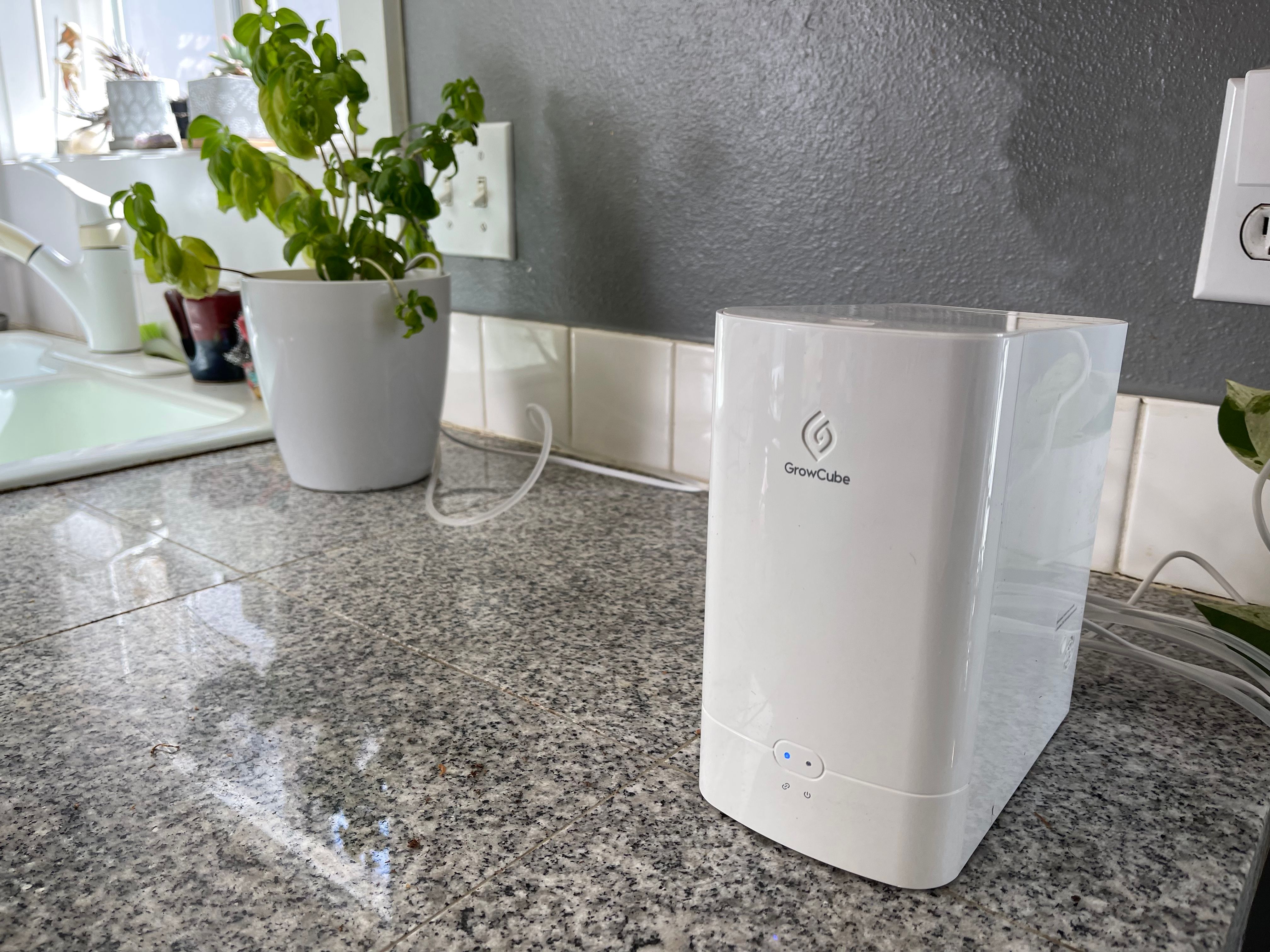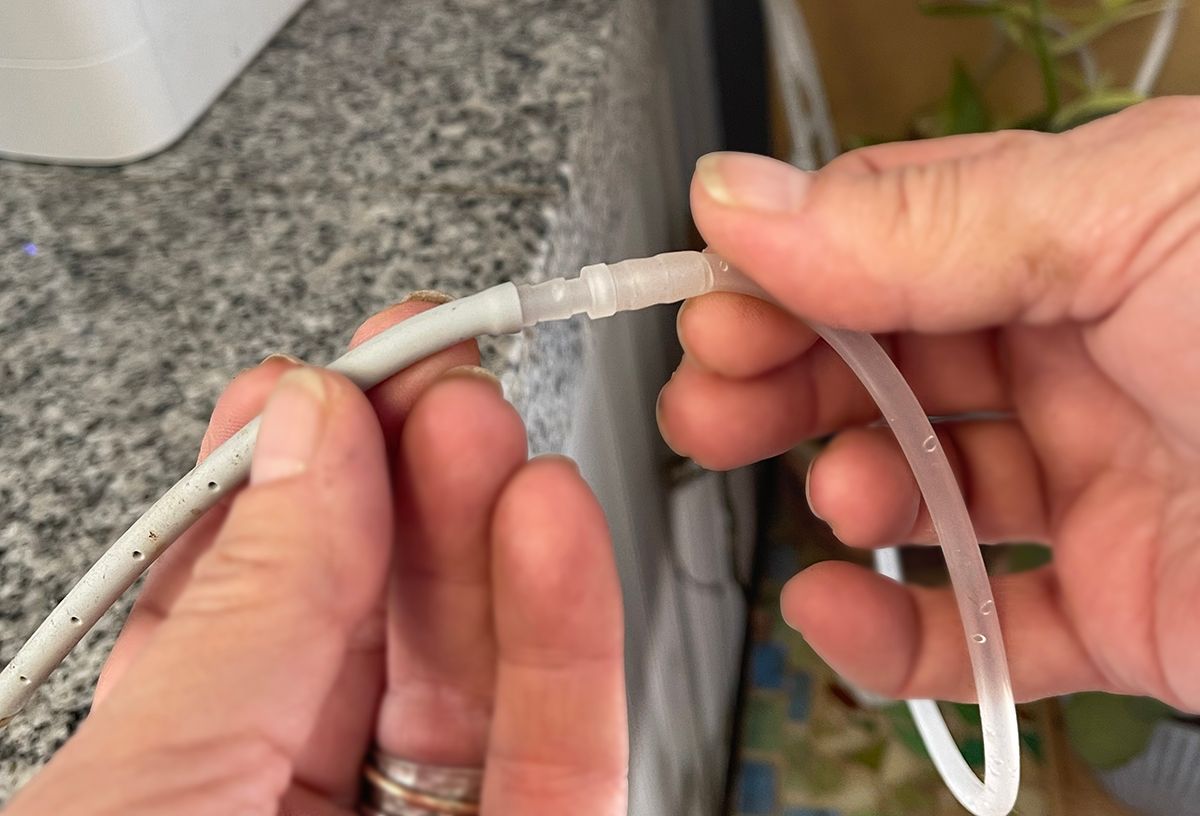Whether you have a green thumb or struggle to keep your plants alive, you’ll appreciate the GrowCube Smart Automatic Watering Kit. You’ll like it even more if you struggle to remember when to water each of your plants.
- Water tank: 1.5 liters
- Dimensions: 3.9 x 6.7 x 7.1 inches
- External water input: Yes
- Pot capacity: 4 (sensors and outlets)
- Enjoy your plants without worrying about watering
- Manually water your plants without leaving your chair.
- The GrowCube is sleek and fits into any decor. (Hide the hoses behind leaves)
- Water is delivered slowly so it doesn't run out the bottom of the pot.
- You won't over-water or under-water your plants.
- Smart, schedule, or manual watering modes.
- Sensor may not work properly in plants with a dense rootball.
- Similar scientific names make it hard to choose which is the correct plant in the database
- Sensor cords are only 1 meter limiting how far away you can place plants from watering unit.
- When adding a new plant, you'll likely need to guess at soil moisture percentages.
- Must look up plants by botanical name in database (this may be fixed).
Indoor plants enliven our decor—at least, they do when they are healthy. It can be hard to keep track of varying watering schedules though. Wouldn’t it be nice if your plants could magically be watered and kept alive even while you’re away on vacation? That’s the idea behind the Elecrow's GrowCube smart watering system which senses precisely how much water your plants need and when to water them.
The GrowCube has launched its crowdfunding campaign on Kickstarter with an expected ship date of July 2022. It’s a simple system that includes a watering unit with soil moisture sensors and watering hoses placed in your plants. The GrowCube gets its “smarts” from a smartphone app to control watering. Once you identify your plants in the smartphone app, the GrowCube intelligently pumps the perfect amount of water to your plants when they need it.
First Watering System to Combine Soil Moisture Sensors with Watering
The GrowCube is the first smart watering system that both senses the moisture in the soil and waters the plants based on its information. The idea was born in 2015 when GrowCube’s developers created an Arduino DIY garden system that could automatically irrigate flowers. In 2017 they started a consumer product based on their gadget and set out to conduct botanical research and design the software and hardware that became the GrowCube.
Other indoor plant watering systems can be scheduled to automatically water plants. The Dripping Pro system can be programmed to water on a set schedule, for instance. Still, it doesn’t take into account the room temperature and humidity. The plant might not yet need water, which could lead to over-watering.
Other systems like Rise Gardens provide everything you need for your indoor garden, from grow lights to growing containers and plants. Typically, you add water once a week. These systems use a hydroponic planting system where the plants grow without soil. But these garden systems won’t water your potted plants.
The GrowCube Watering System
The GrowCube holds 1.5 liters of water in a sleek unit. A soil moisture sensor and a watering hose connect to the unit’s back and then out to four individual potted plants. This is how the GrowCube measures the wetness of each plant’s soil and waters it. Water is delivered through the hose connected to a drip irrigation nozzle that you coil atop the soil around the plant.
The GrowCube communicates with the GrowCube app via a direct Wi-Fi connection or your home network. After you identify the plants to be watered by the GrowCube, you can set watering preferences, manually water your plant if it is looking parched, view watering history, and keep an optional diary where you can track a plant’s growth and health.
One GrowCube unit works with four relatively close plants—perfect for groupings on a window sill, countertop, or even alongside a room wall. It comes with 10 meters of water tubing so that you can vary each plant’s distance to the unit. Still, you probably won’t want to place the plants far across the room from the GrowCube. The Kickstarter campaign offers a discount on multiple units, so you can place a GrowCube in the corner or multiple rooms.
Even if you don’t group your plants, you can gather them into an area around the GrowCube when you’ll be away from home and can’t water. The GrowCube app will notify you when the water is getting low in the unit. If you plan to be away for more than a week, the watering unit has a water inlet. Connect a tube that is placed in a larger water container (a pitcher or bucket) as a backup reservoir.
Setting up the GrowCube Unit
The GrowCube app displays step-by-step visual instructions on setting up your GrowCube. Alternatively, the GrowCube comes with an extensive, easy-to-follow illustrated manual.
Begin by connecting a magnetic soil moisture sensor into one of four ports (A, B, C, or D) and gently plunging the sensor into the soil of a potted plant. The sensor shouldn’t be too close to the edge of the pot, and it should be inserted 1/3 of its length above the soil.
Next, measure the length of tubing you’ll need to water the plant. You might want extra length if it’s a large pot. Connect one end of the tube to the water outlet labeled with the letter corresponding to the sensor you just connected. Use a tube connector to attach the watering nozzle to the tubing. It’s easiest to twist the tube onto the connectors.
Soil stakes are included to hold the tubing in place in the pot. You’ll want to keep the watering nozzle close to the soil and ensure that the nozzle holes don’t spray water outside the pot.
Repeat with the remaining (up to three more) plants. Fill the tank with water, and plug the GrowCube into power.
Setting up the GrowCube App
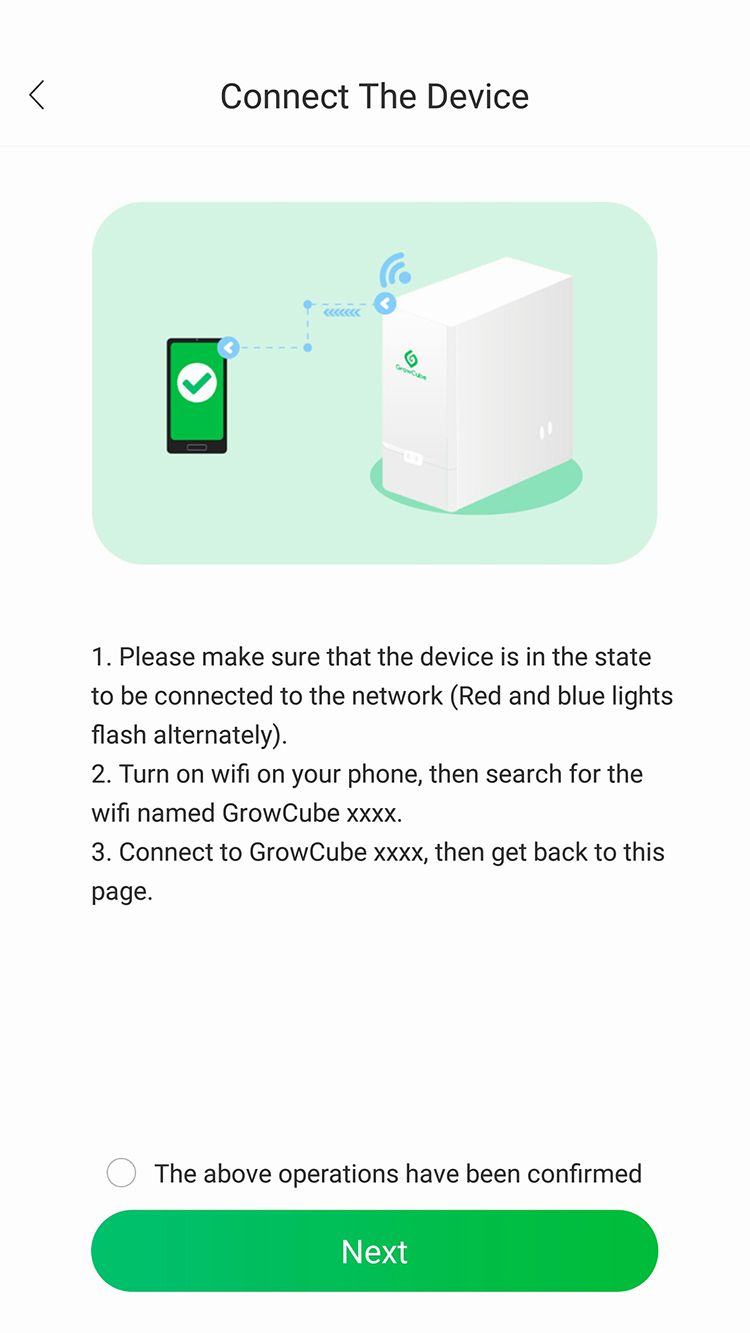
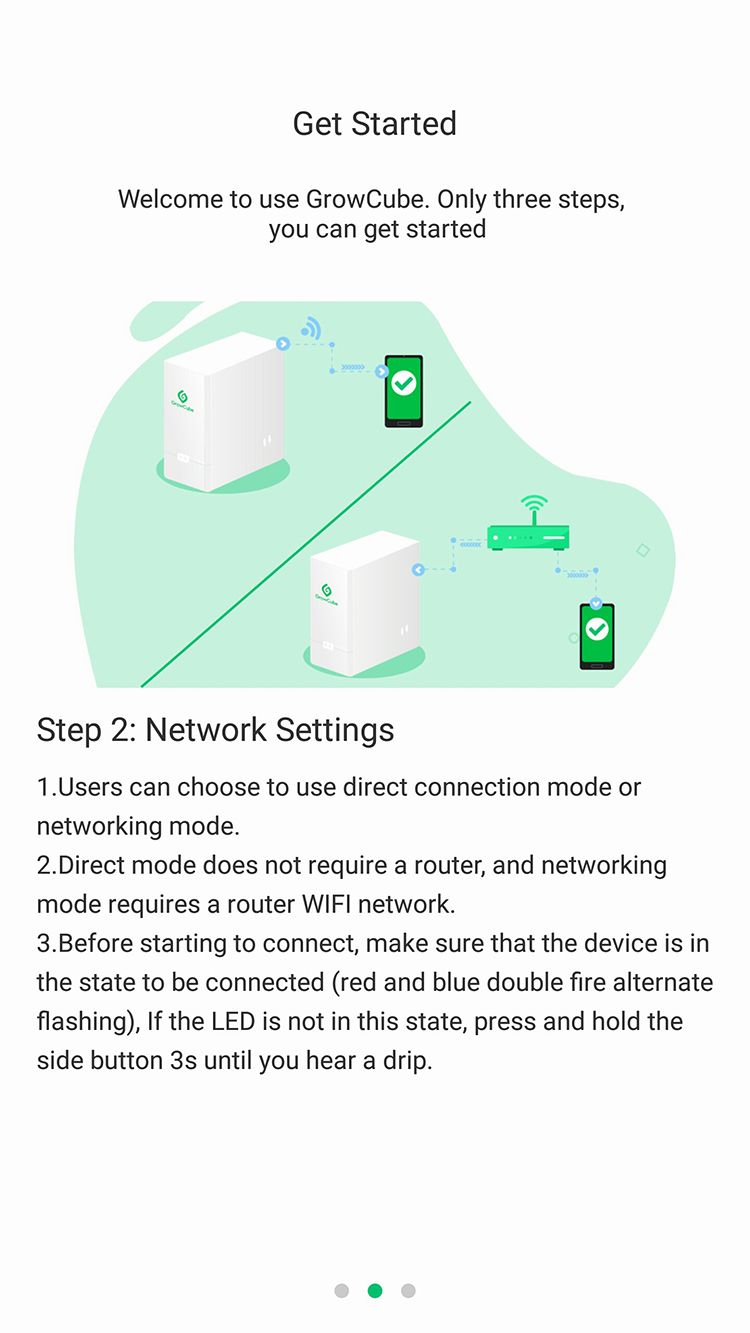
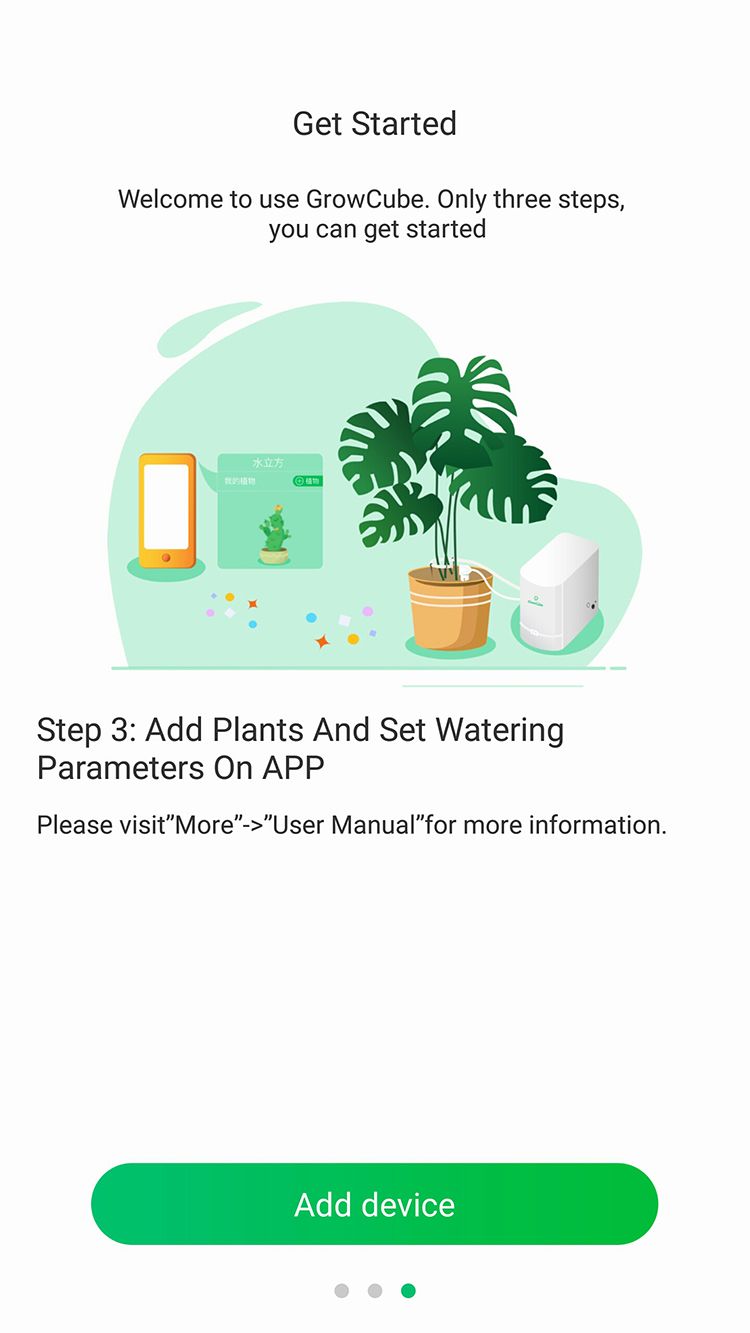
After the GrowCube is connected to the plants, you’ll need to establish communication with the GrowCube app. This can be done using direct Wi-Fi, where the phone finds the GrowCube as an ad-hoc access point. To communicate with the GrowCube when you are away from home, set up your GrowCube on your home network.
Be sure that your phone is using the 2.4 GHz WiFi band of your home network router and follow the instructions in the app.
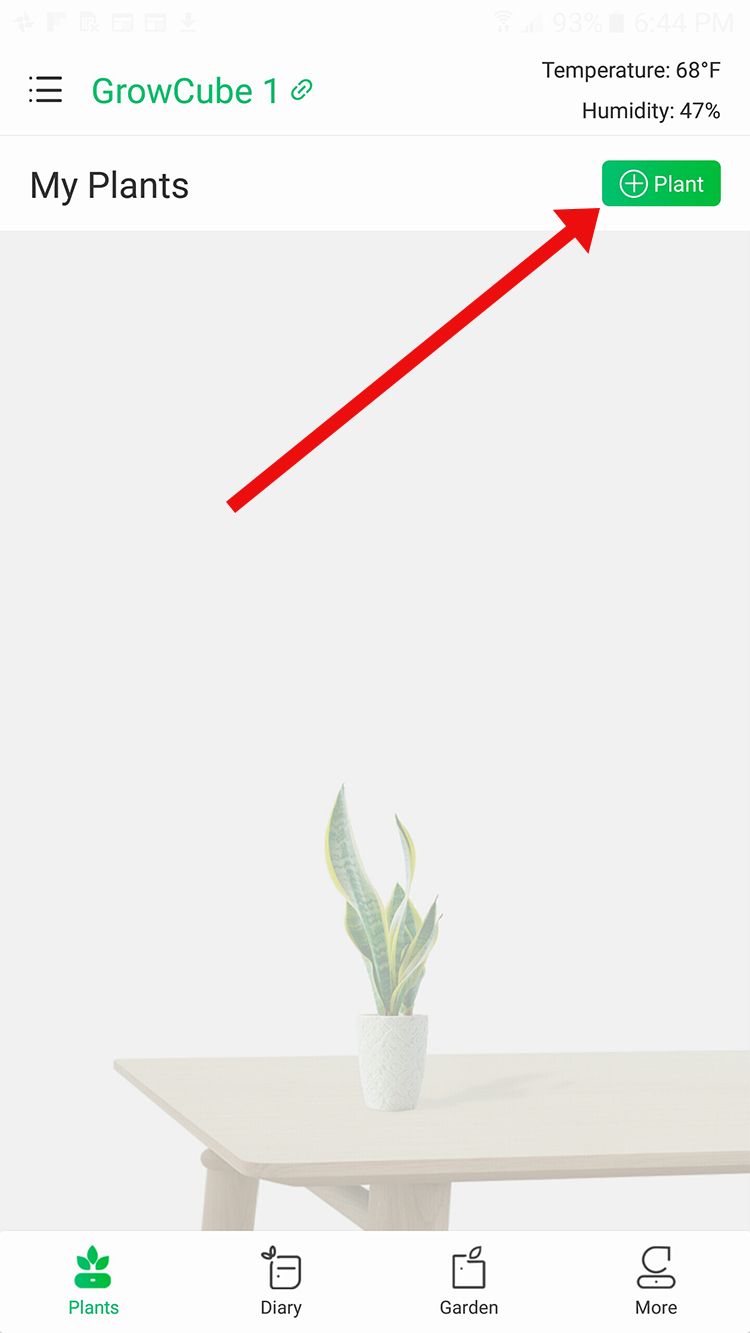
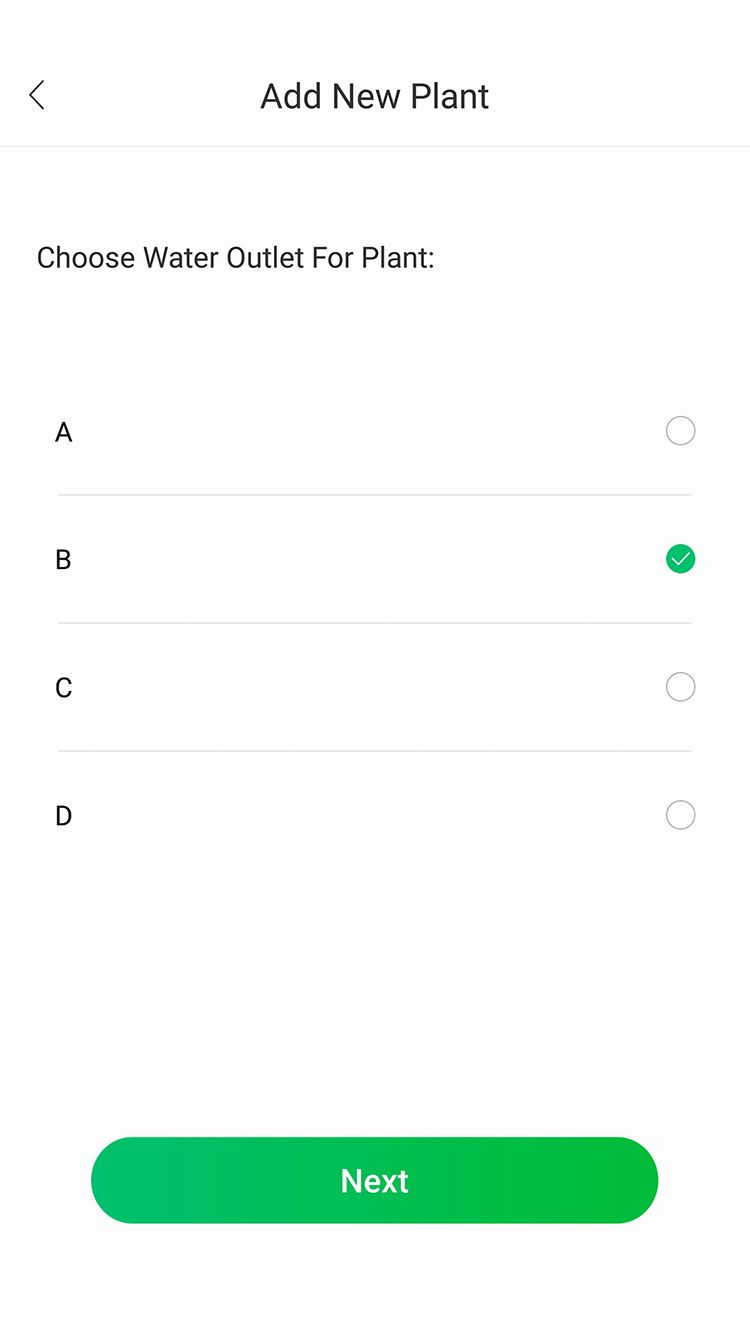
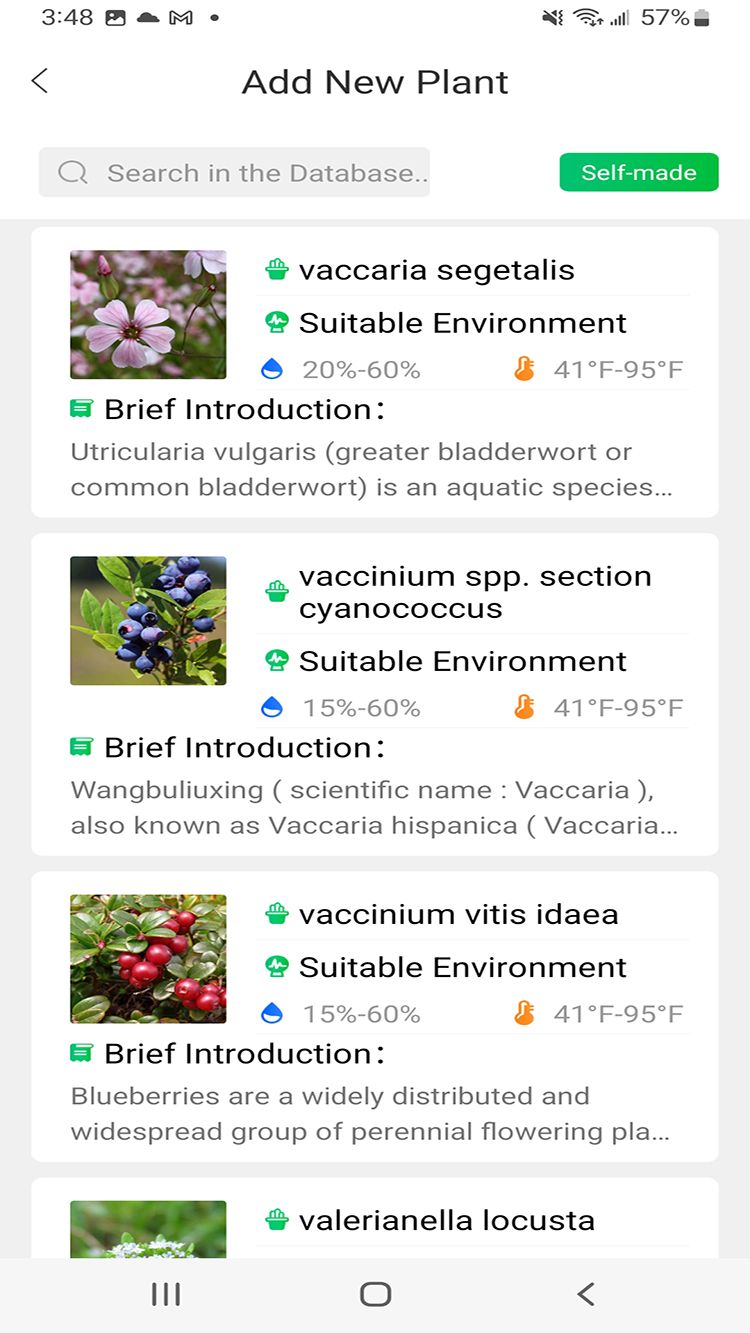
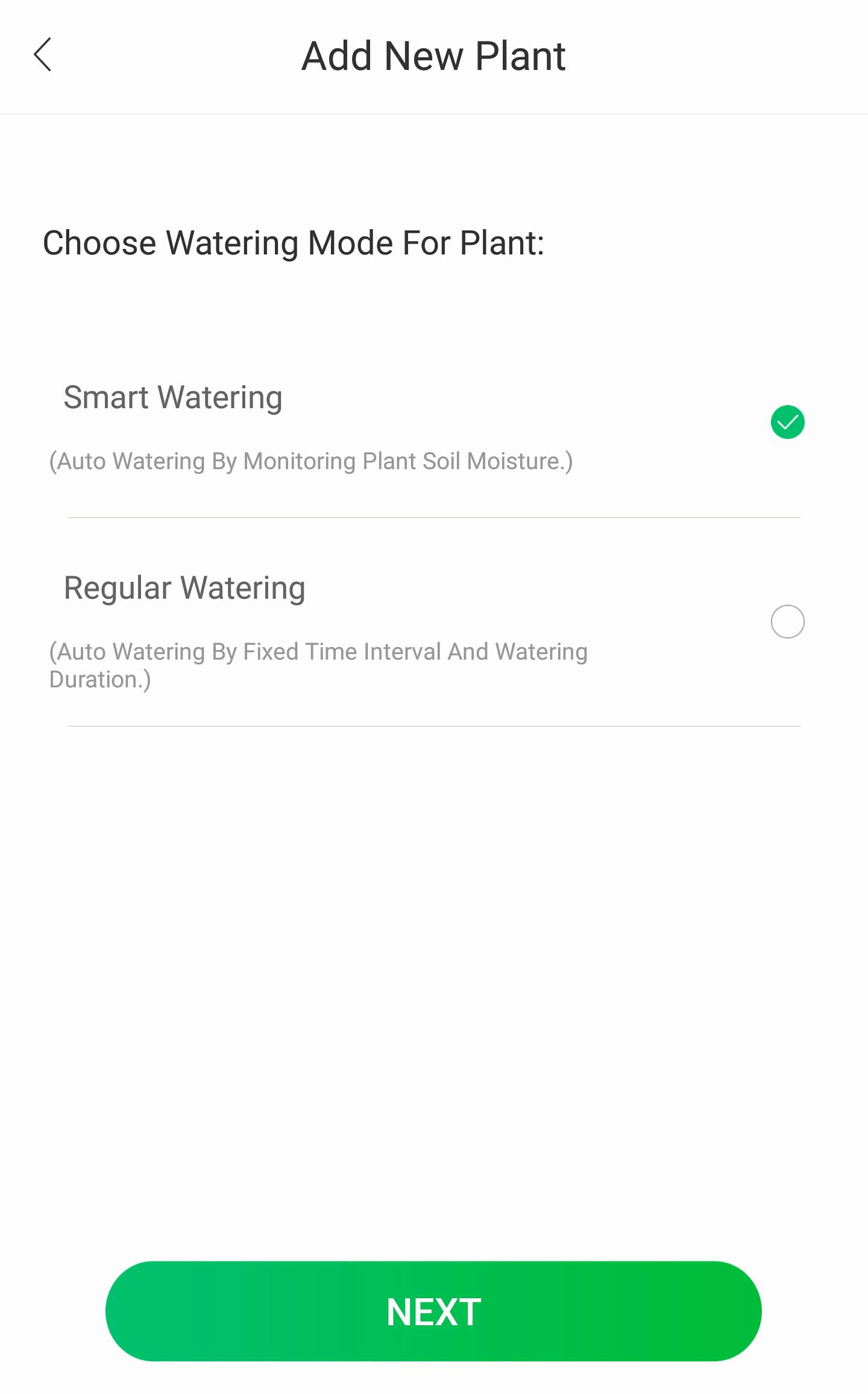
Once the app is set up, add your plants by tapping +Plant.
Choose the sensor outlet letter that is connected to that plant.
Currently, you’ll need to search for the plant by its scientific or botanical name. Suppose you only know your plant as a Sweet Basil or a Jade Plant. In that case, there are many ways to identify your plant and find its botanical name, including using Google Lens to snap a photo of your plant and search by the image. Once you know the plant name, search for it in the GrowCube database.
When you choose a plant, the app displays its optimal growing environment. Both soil moisture needs and the environmental temps it grows best in. Note that the GrowCube app shows the room temperature and humidity as well.
Add a New Plant
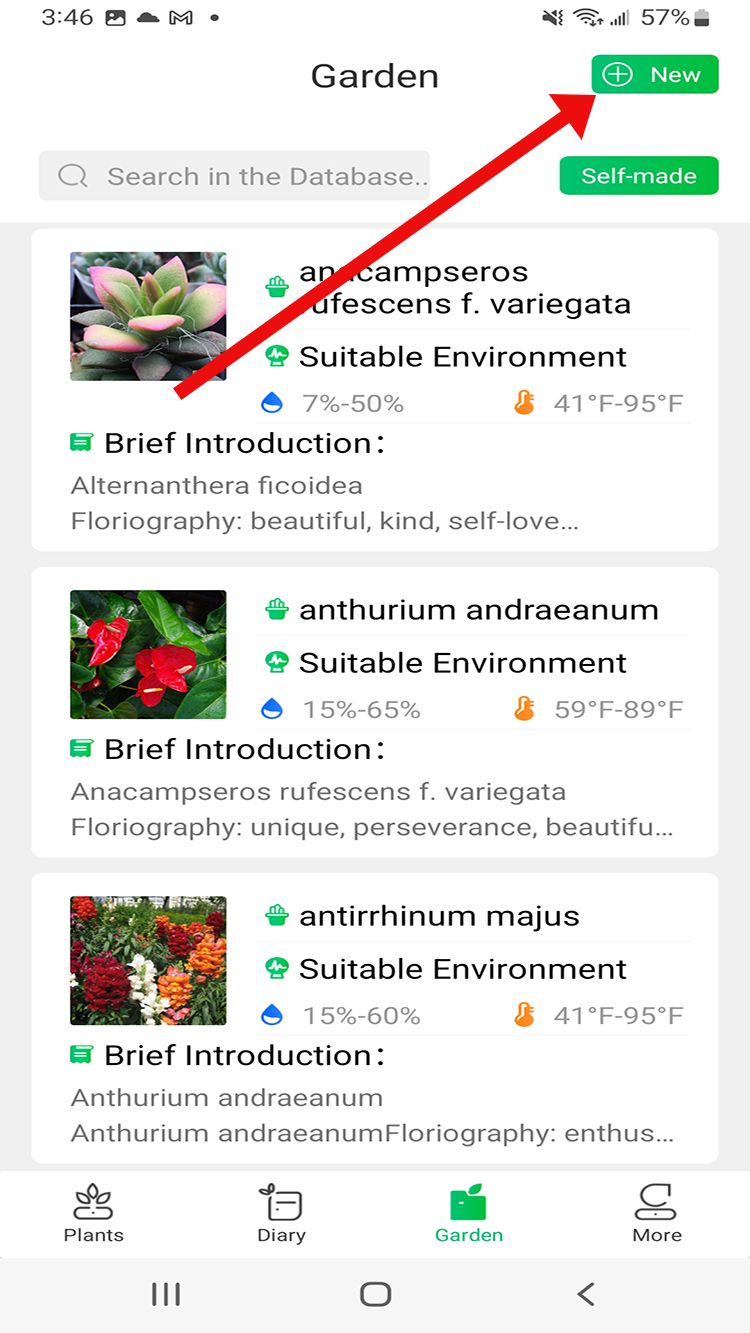
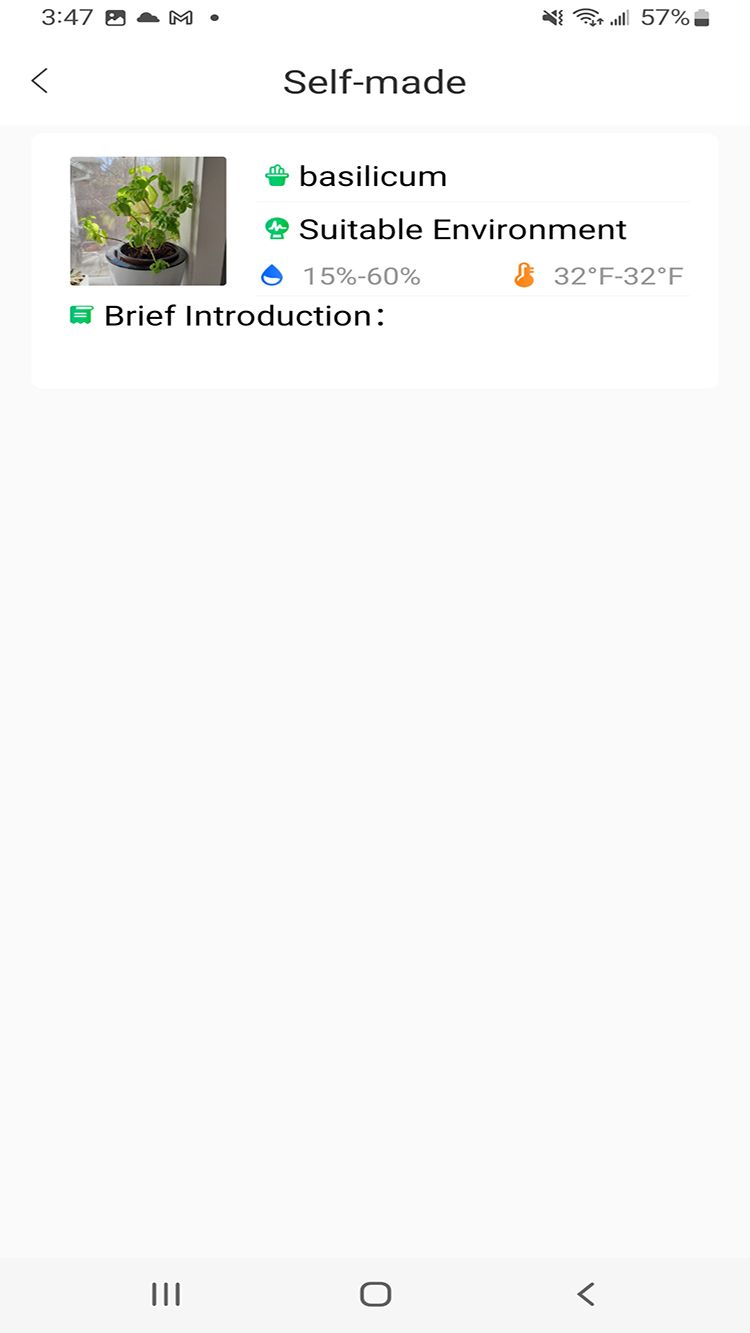
While there are over 3000 plants in the GrowCube database, it’s easy to create a new plant if you can’t find your plant. You’ll need to know its growing needs, particularly its suitable soil moisture percentage. Before connecting the new plant to the GrowCube, you must first add it to the Garden section of the app.
In the Garden tab, tap +New, fill out the information about the plant, then save it. When choosing the new plant to connect to the GrowCube, you’ll find it under Self-made in the Garden section of the app.
The Garden section is also a great resource to learn more about different plants and their growing needs.
Set up Preferences for Each Plant
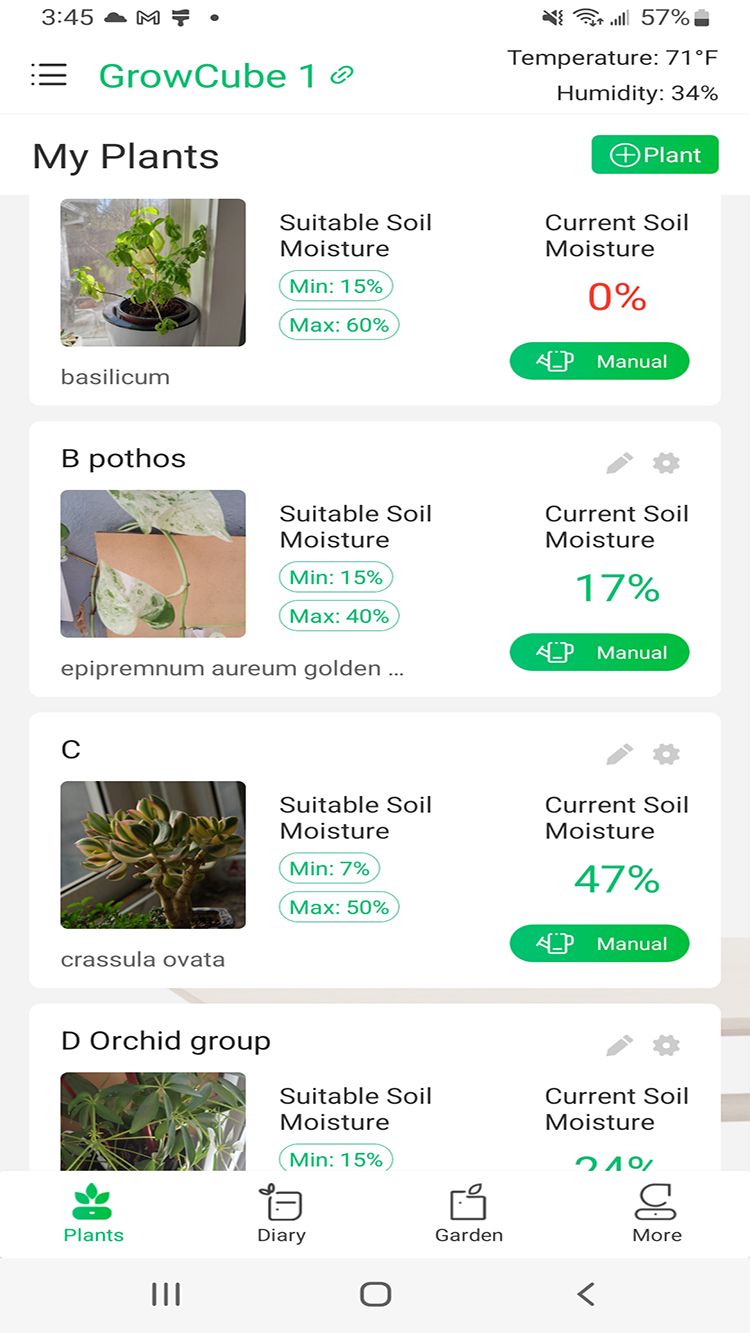
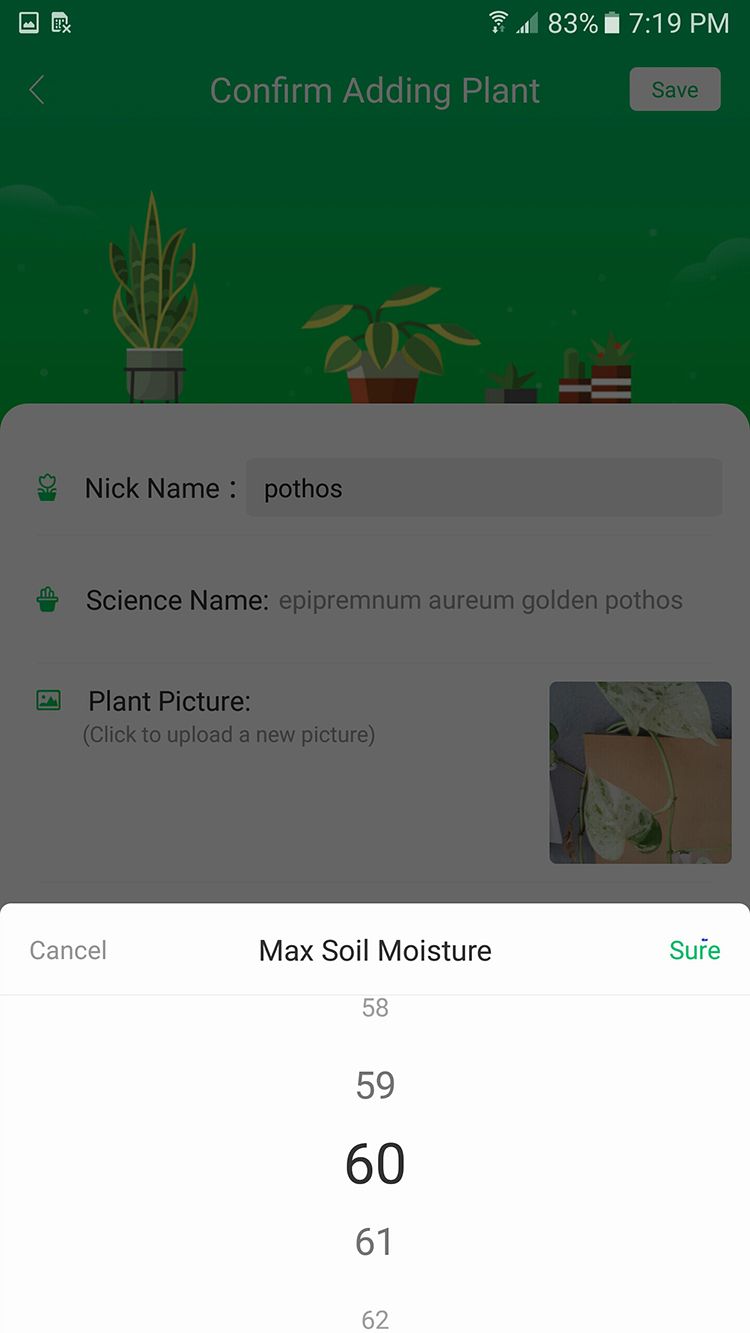
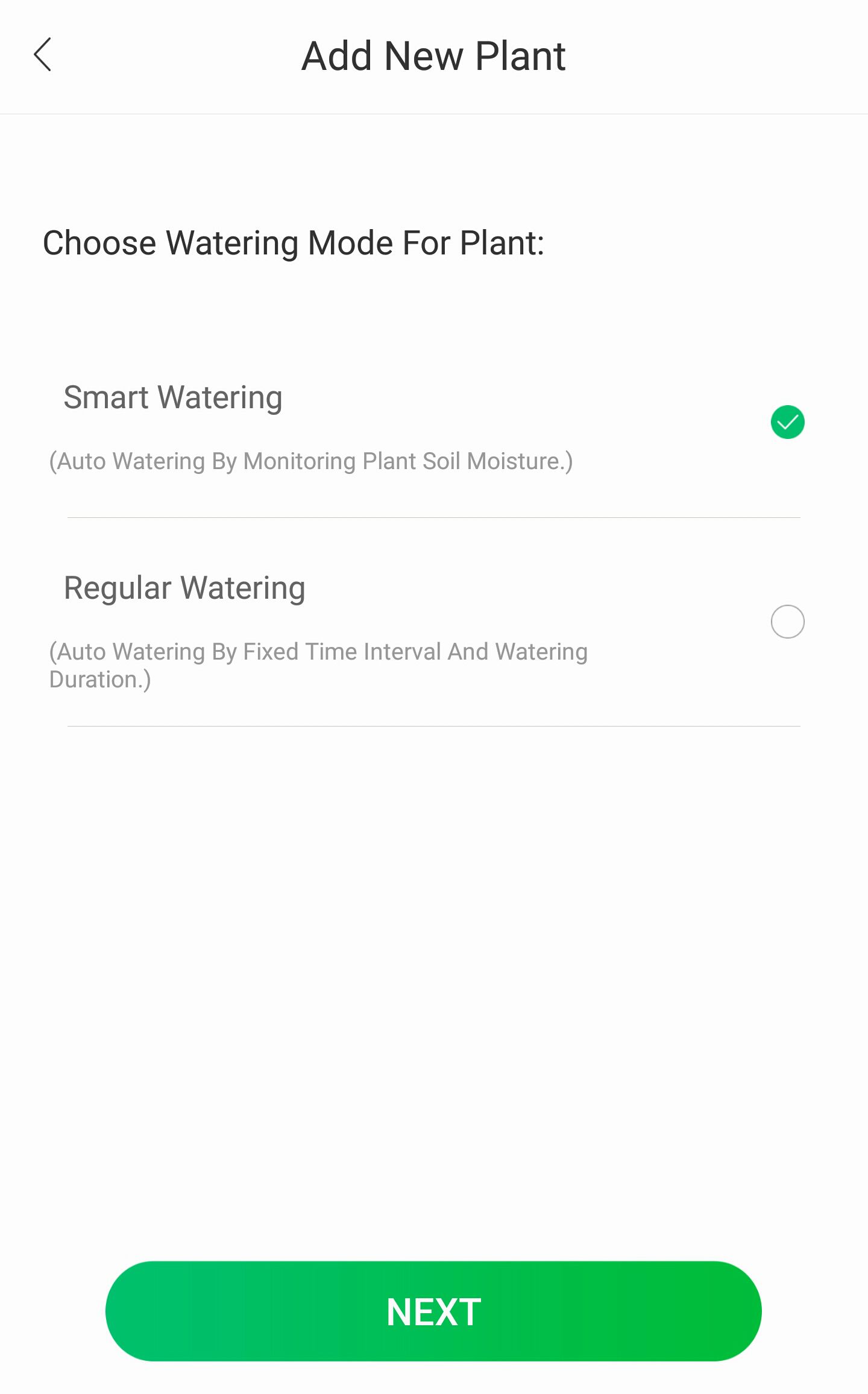
Each plant allows you to modify its settings. You can choose between Smart watering or Automatic watering. Automatic or “Regular” watering will enable you to set a fixed time interval and duration—from hours to 10 days, and watering duration from 1 second to 100 seconds. For example, you can water the plant every three days for 60 seconds.
Smart watering will automatically water the plant if the soil moisture percentage is below the recommended minimum for that plant. Each type of plant has a range of soil moisture percentages where it thrives. If you have a plant that you know does better when it dries out or likes a lot of water, you can change the Suitable Soil Moisture settings.
For outdoor plants or those in a hot window, you can switch on a mode that skips watering during times of day when the sun might instantly dry out the plant.
Track the Plant’s Progress
In the app’s main dashboard, tap on any individual plant to bring up its watering history listed by dates and times and whether it was automatic (“intelligent”) or manual watering. A graph shows the soil moisture by hours, days, or months.
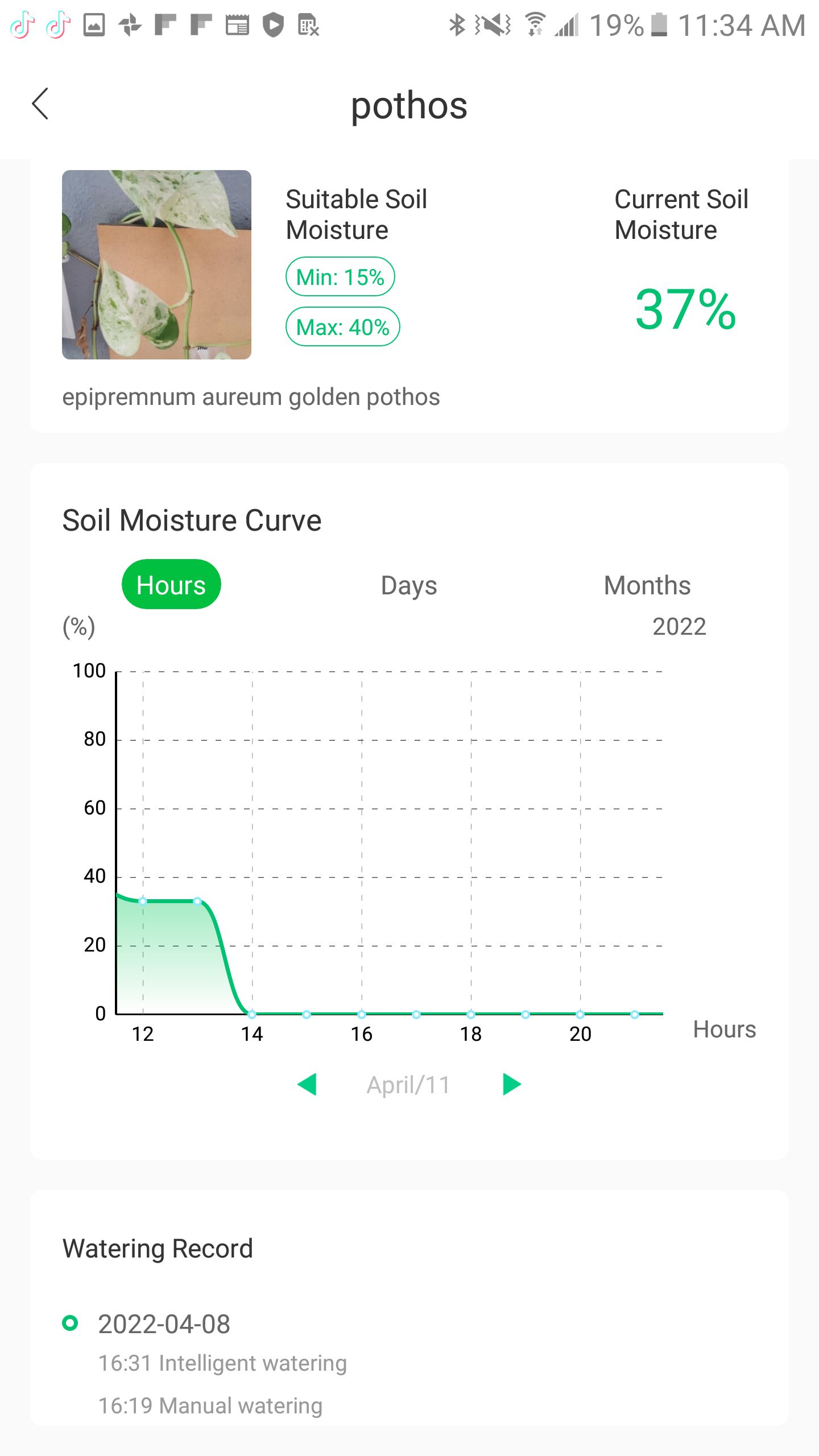
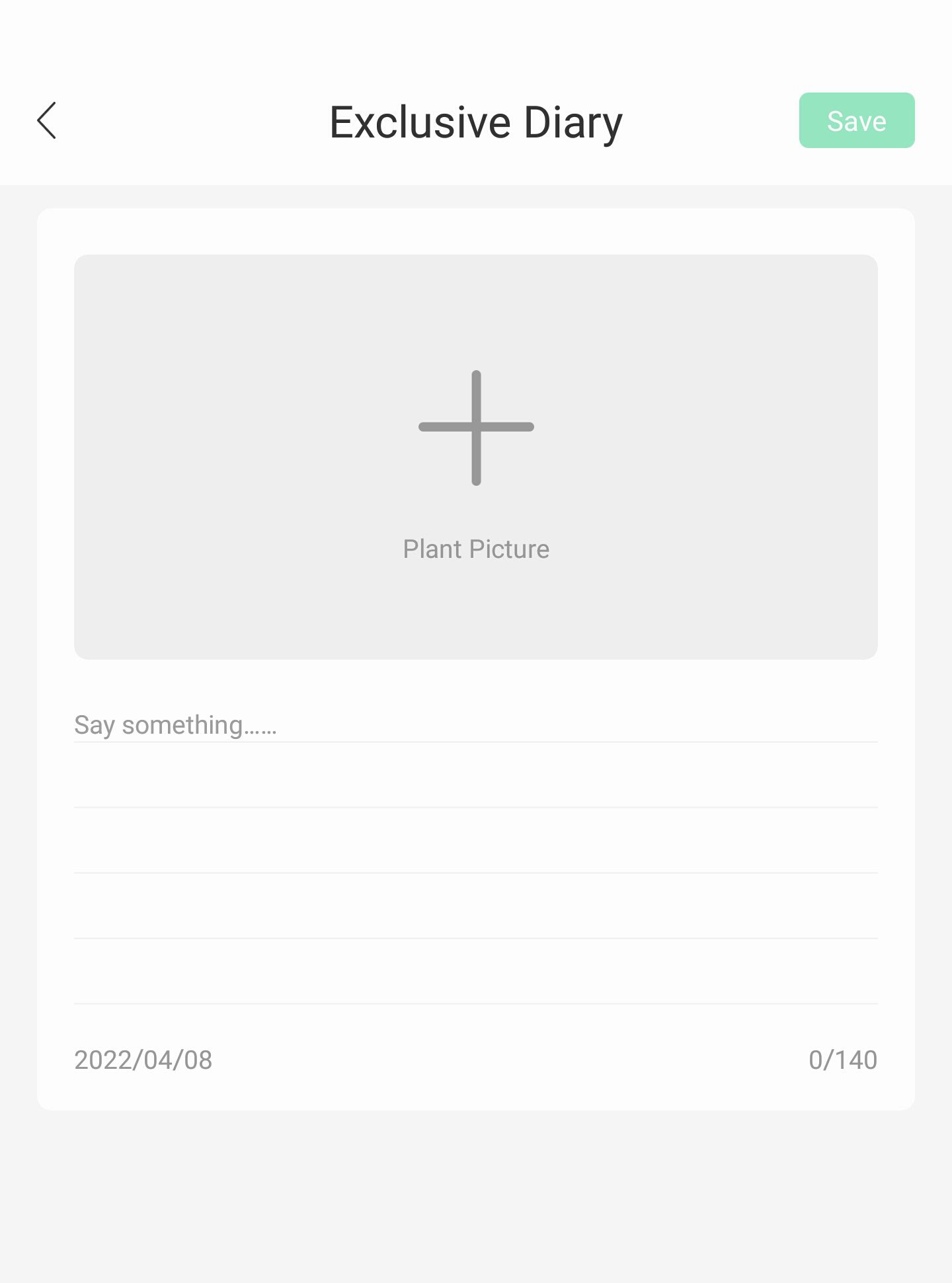
Keep a Plant Diary
The Diary mode lets you track the plant’s growth and health. Tap on the pencil icon on the plant to bring up the Exclusive Diary entry page. Here you can add a photo and enter notes. This would be helpful for sick plants you are nursing back to health or watching the progress of seedlings.
Does It Actually Work?
Some plants are an investment, or you may have an emotional attachment to others, like your late husband's pothos for ten years before you met. But, you can trust the GrowCube to water your plants correctly.
That’s why the GrowCube was designed with safeguards. Suppose it keeps watering a plant but the sensor doesn’t register a higher moisture percentage. In that case, the outlet will be turned off, and the app sends a notification that the sensor is abnormal. If the watering tube is blocked or the sensor becomes disconnected, you’ll also receive a message. Note that you can still water manually if an outlet “is blocked,” so you don’t have to worry that your orchid will not get watered and die if you aren’t home.
If you haven’t been watering your plants correctly before using the GrowCube, you can expect them to perk up in the first week you start using it. The smart watering system is more convenient than pulling out a watering can every day as you try to remember which plants need water and when. And it’s healthier for the plant not to wait until its leaves are drooping before watering it—my basil plant is sprouting again with regular watering.
While testing, the GrowCube correctly watered my plants when it detected that their moisture was below the set minimum. Water was delivered in short bursts every two minutes until the sensor showed a steady soil moisture percentage within the set range. This delivery method keeps the water from draining out the bottom of the pot like is typical when you water a plant.
The GrowCube is still in its final testing phase before shipping. The company assured me that any bugs found will be fixed before its release date. Some of the issues included:
- Common names need to be added to the plant database.
- A bug has already been fixed where the graph was showing water levels two hours into the future.
- Currently, the GrowCube app is only available for Android, but there should be an iOS app by the time it is released in July.
Get the GrowCube if You Have Indoor Plants
Whether you have a green thumb or struggle to keep your plants alive, you’ll appreciate the GrowCube Smart Automatic Watering Kit. You’ll like it even more if you struggle to remember when to water each of your plants.
If you can’t group your plants because of their size or your decor, the GrowCube may not be for you.

